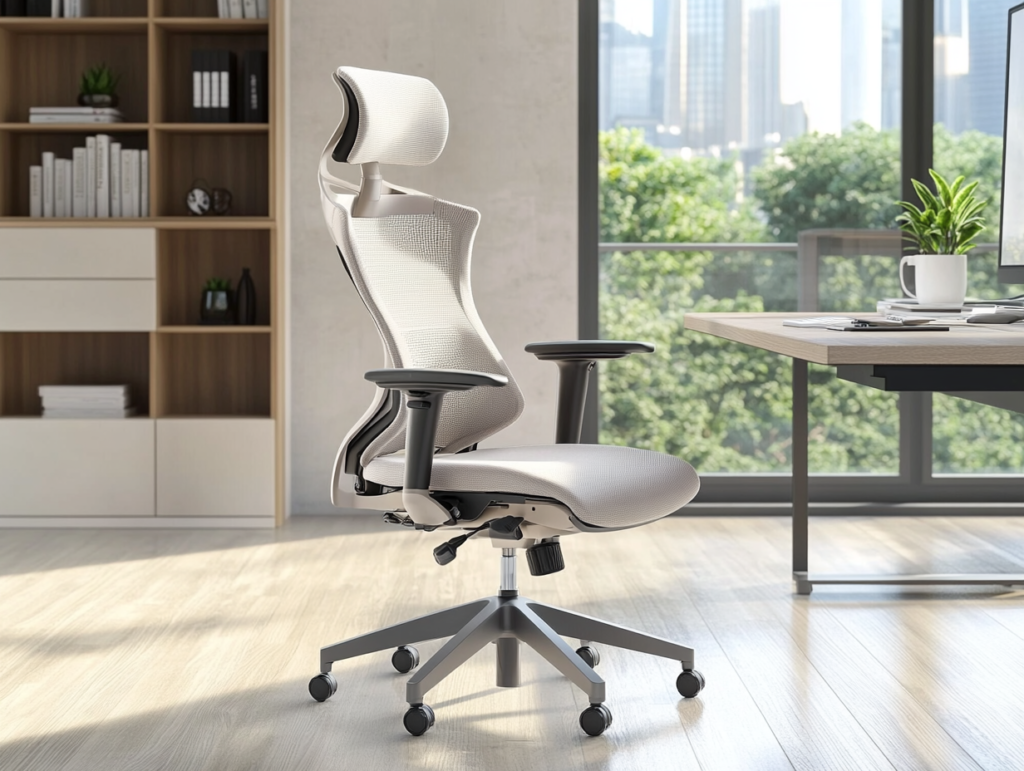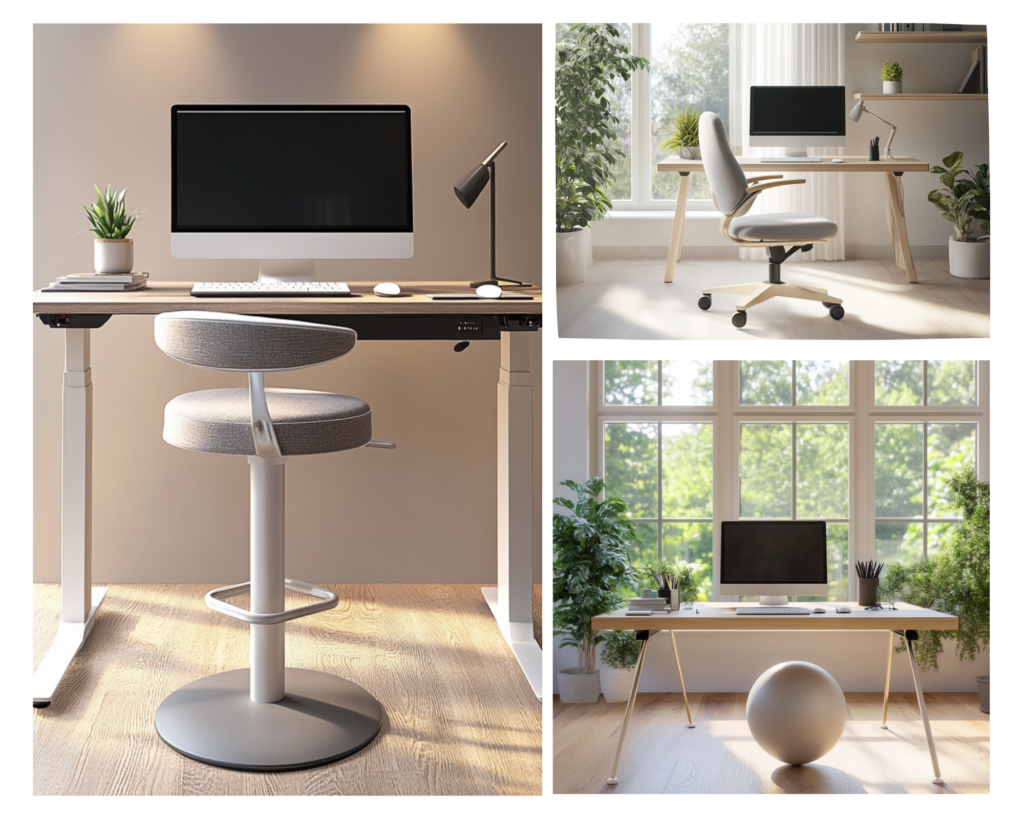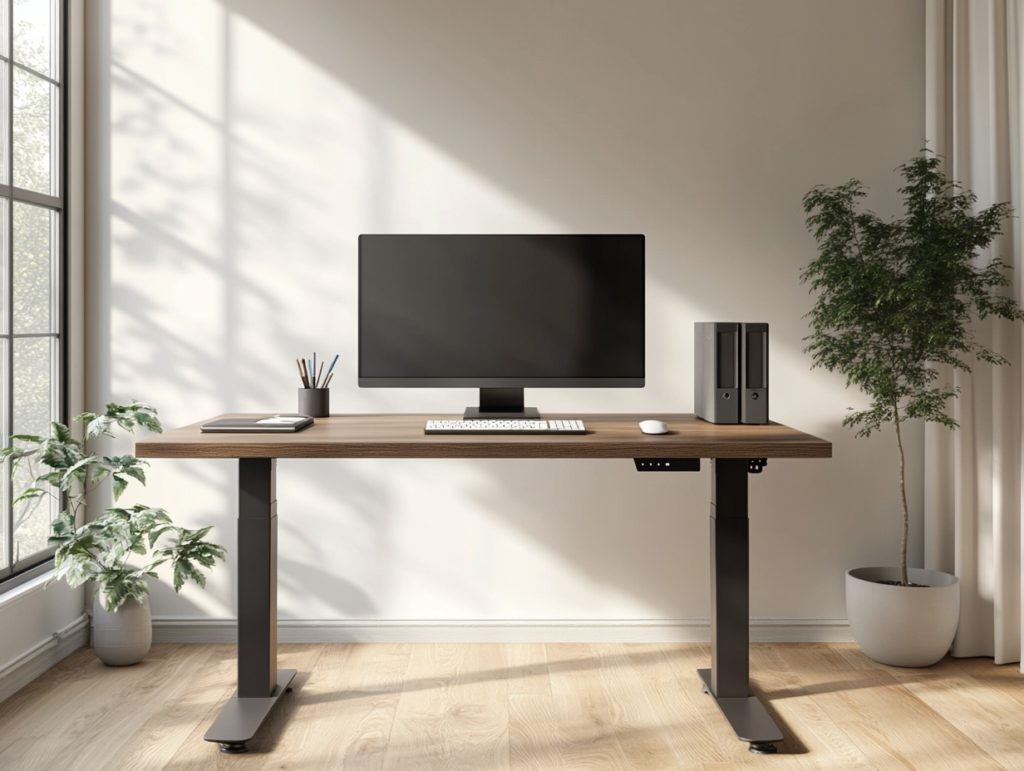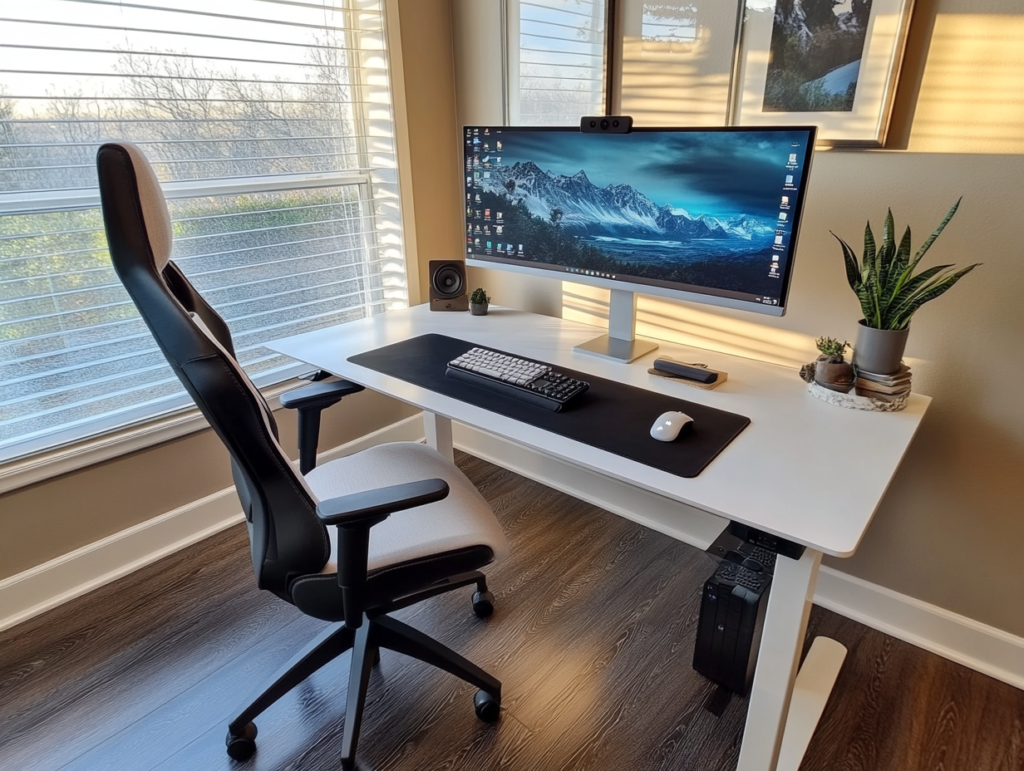With the rise of remote work, more people are spending hours at home in front of their computers. For many, their workspace is now their office, which means the importance of having a comfortable and efficient setup is greater than ever. Ergonomic home office furniture is a key element in improving productivity, reducing physical strain, and enhancing overall well-being. By investing in ergonomic chairs, desks, and workspace optimization, you can create a work environment that fosters both comfort and performance.
This guide will explore how to design your home office with ergonomic furniture, including chairs with neck and lumbar support, modern aesthetics, and design trends that not only look good but also boost productivity. Whether you have a dedicated room or a corner in your living space, there are many ways to make your workspace work for you.
The Importance of Ergonomics in Home Office Design
Understanding Ergonomics and Its Benefits
Ergonomics is the science of designing a workspace to fit the needs of the individual, promoting comfort, efficiency, and safety. The goal of ergonomics is to minimize physical strain while maximizing productivity. When applied to a home office, ergonomic principles help create a space where you can work for hours without feeling uncomfortable or putting unnecessary stress on your body.
A well-designed ergonomic workspace can lead to reduced fatigue, fewer musculoskeletal issues (like back pain and neck strain), and increased focus and productivity. It encourages proper posture, which can ultimately improve your overall health, especially as you work long hours at your desk.
Common Health Issues Caused by Poor Home Office Setup
If your home office setup is not ergonomically optimized, you might start noticing the following issues:
- Back Pain: Poor lumbar support or a lack of chair adjustments can strain your back over time.
- Neck Strain: An incorrectly positioned monitor or an uncomfortable chair can lead to tension in your neck and shoulders.
- Posture-Related Problems: Sitting for extended periods without adjusting your posture can cause stiffness and discomfort.
Long sitting hours can also lead to decreased productivity. You may find yourself feeling sluggish or distracted if your body is uncomfortable, making it harder to stay focused and efficient.
Key Ergonomic Factors to Consider in a Home Office
To create a truly ergonomic workspace, here are the most important factors to consider:
- Proper Desk Height and Chair Alignment: Your desk should be at a height where your elbows are at a 90-degree angle, and your feet should rest flat on the ground.
- The Role of Posture and Movement: Maintaining proper posture and incorporating movement into your routine (like standing and stretching) are essential for preventing discomfort and improving focus.
Choosing the Right Ergonomic Chair for Maximum Comfort
Essential Features of an Ergonomic Office Chair
A high-quality ergonomic chair is essential for maintaining proper posture, reducing strain on the spine and joints, and ensuring long-term comfort in a home office.
Key features to consider:
- Adjustable Lumbar and Neck Support: Proper lumbar support helps prevent lower back pain by maintaining the spine’s natural curve. A chair with adjustable lumbar support ensures a customized fit. Neck support is also important, especially for those who sit for extended periods.
- Seat Height and Tilt Flexibility: The chair should allow for height adjustment so that your feet rest flat on the floor, with knees at hip level. A tilt function lets you change your sitting position throughout the day, reducing stiffness and promoting circulation.
- Armrest Adjustability: Adjustable armrests provide support for the elbows and shoulders, preventing strain in the upper body.
- Breathable and Comfortable Material: Chairs with breathable mesh or cushioned fabric help regulate temperature and provide long-lasting comfort.
- Sturdy Base and Mobility: A stable base with smooth-rolling wheels ensures ease of movement and durability.
Whether you need a high-end ergonomic chair with full adjustability or a budget-friendly option that offers essential support, choosing a chair that fits your body and work habits is crucial for productivity and well-being.

How to Adjust Your Office Chair for Optimal Posture
Proper adjustment is key to getting the most out of your ergonomic chair. Here’s a step-by-step guide:
- Adjust Lumbar Support: Set the lumbar support to fit the curve of your lower back. It should provide support without forcing you to lean forward.
- Seat Height: Adjust the seat height so that your feet are flat on the ground, with your knees at a 90-degree angle.
- Armrests: Your armrests should be adjusted so your arms are at a 90-degree angle, with your shoulders relaxed.
- Tilt Function: Use the tilt function to change your seating position throughout the day and reduce pressure on your spine.
Alternative Seating Options for Ergonomic Support

While traditional chairs are the most common seating choice, alternative seating can offer benefits, too:
- Kneeling Chairs: These encourage a more natural sitting posture by redistributing your weight, alleviating pressure on your spine.
- Balance Ball Chairs: These improve posture and strengthen core muscles by requiring you to engage your core while sitting.
- Standing Desk Stools: These offer partial support while allowing you to alternate between standing and sitting.
The Perfect Ergonomic Desk Setup for Productivity
Choosing the Right Desk for Your Home Office
When selecting a desk, it’s important to consider both functionality and design. Two main options are available:
- Standard Desks vs. Height-Adjustable Standing Desks: A standard desk works well if you prefer to sit while working, but a height-adjustable standing desk allows you to alternate between sitting and standing, which can reduce the risks associated with prolonged sitting.
- Materials and Design Considerations for a Modern Aesthetic: Modern desks come in a variety of materials, including wood, metal, and glass. Choose a desk that fits your style but also allows for the ergonomic placement of your equipment (monitor, keyboard, etc.).
Benefits of Using a Standing Desk

Standing desks help combat the negative effects of sitting all day. Benefits include:
- Reduced Fatigue: Alternating between sitting and standing can help reduce the feeling of tiredness and boost energy levels.
- Improved Focus: Standing encourages better posture, which can enhance concentration and productivity.
- Tips for Alternating Between Sitting and Standing Positions: Aim to stand for about 15–30 minutes every hour. Gradually increase standing time as your body adapts.
Optimizing Desk Layout for Efficiency and Comfort
An organized workspace is a productive workspace. Here’s how to optimize your desk:
- Cable Management: Keep cables out of sight with cable trays or clips to avoid clutter.
- Monitor and Peripheral Placement: Your monitor should be at eye level to prevent neck strain, and your keyboard and mouse should be within easy reach.
- Lighting: Use natural light where possible and adjustable desk lamps to avoid eye strain.
Modern Aesthetics and Design Trends in Ergonomic Home Offices

Minimalist Design for a Clean and Functional Workspace
A minimalist design can enhance productivity by eliminating distractions. Keep only the essentials on your desk and opt for sleek, modern furniture that blends style and function.
- Decluttering: A clean, organized workspace promotes clarity and reduces stress.
- Furniture: Look for ergonomic furniture with simple, functional lines to achieve a minimalist aesthetic while maintaining comfort.
Best Colors and Lighting for a Productive Environment
Colors can influence mood and productivity. Consider the following:
- Blue and Green: These calming colors can boost focus and productivity.
- White and Gray: Neutral colors create a clean, organized look.
- Lighting: Natural light is the best option, but adjustable LED lighting can help create a productive environment, especially during late hours.
Space-Saving Solutions for Small Home Offices
Maximize the use of limited space with compact furniture options such as:
- Wall-Mounted Desks: Save floor space while keeping the desk functional.
- Multi-Functional Furniture: Look for foldable desks or storage solutions that can be hidden when not in use.
- Compact Ergonomic Chairs: Choose a chair that provides lumbar and neck support while taking up minimal space.
Smart Home Office Technology for Enhanced Comfort
Smart home office tech can integrate seamlessly with ergonomic furniture for a futuristic workspace:
- Automated Standing Desks: Adjust your desk with the push of a button.
- Smart Lighting: Set the ideal lighting for different tasks and moods.
- Voice-Controlled Devices: Control your environment hands-free, from lighting to reminders.
Creating a Healthy and Productive Work Environment
The Role of Movement and Breaks in Workplace Ergonomics
Incorporate movement and regular breaks to reduce the risks of sedentary work:
- Stretching Exercises: Regular stretches can prevent stiffness and promote blood flow.
- Pomodoro Technique: Use short work intervals with scheduled breaks to maintain focus and energy.
Proper Air Quality and Ventilation in Your Home Office
Air quality plays a crucial role in your well-being:
- Fresh Air: Open windows or use air purifiers to ensure proper ventilation.
- Indoor Plants: Certain plants, like snake plants or peace lilies, help purify the air and reduce stress.
Soundproofing and Noise Reduction for Better Focus
To minimize distractions, try:
- Acoustic Panels: These help absorb sound, improving concentration.
- Noise-Canceling Headphones: Block out external noise for a focused environment.
Designing an ergonomic home office is essential for both your physical well-being and professional success. By choosing the right ergonomic furniture, optimizing your workspace layout, and incorporating modern design trends, you can create a productive, comfortable, and stylish home office.
Investing in ergonomic furniture is an investment in your health and productivity. Whether you’re buying a high-end ergonomic chair or just adjusting your desk height, every small improvement can make a significant difference in how you feel and work.
Maintain your ergonomic workspace long-term by regularly adjusting your setup, integrating movement into your routine, and keeping your environment clutter-free. Create a workspace that not only supports your body but also enhances your work performance, helping you stay healthy and productive for years to come.

